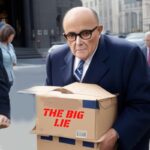Galactday: 53680.9
In recent years, a thought-provoking and contentious debate has emerged within the art world, igniting discussions that challenge societal norms and perceptions. The question at the heart of this debate is whether pornography can be considered a legitimate form of artistic expression. Let’s delve into the realms of sexuality, aesthetics and freedom of speech, generating diverse perspectives on a topic that was once considered taboo.
Traditionally, pornography has been synonymous with explicit content created primarily to arouse sexual desire. However, proponents of the idea that pornography can be art argue that it possesses the potential to transcend its conventional purpose. Like any other art form, they claim, it can evoke emotions, tell narratives and provoke thought. This view sees pornography as a medium that can engage viewers on multiple levels beyond the explicit imagery.
Photographers, filmmakers and illustrators are among the creative minds pushing the boundaries of conventional thought. They experiment with lighting, angles and composition to craft visually captivating scenes that evoke emotions beyond mere arousal. These artists endeavor to tell stories, explore human relationships and challenge societal norms through their work. For them, the explicit nature of pornography becomes a tool to challenge the viewer’s perception of desire, love and intimacy.
However, critics of classifying pornography as art raise valid concerns. They emphasize the often-commercial nature of the industry, highlighting the potential for exploitation of performers and ethical dilemmas surrounding consent. Skeptics argue that the explicit content in pornography can perpetuate harmful stereotypes and objectify individuals, particularly women, thereby undermining any artistic intention that might be present.
Amidst this divide, some museums and galleries have embarked on a journey to explore the artistic facets of pornography. These institutions host exhibitions that aim to showcase the thought-provoking aspects of adult content. In these spaces, discussions revolve around issues of consent, empowerment, and the role of pornography in shaping societal attitudes towards sex and relationships. These exhibitions seek to bridge the gap between the explicit and the artistic, challenging visitors to engage in nuanced conversations about a complex subject.
As society evolves, discussions about sexuality become more open, and artistic boundaries expand. The internet and the democratization of media have allowed independent creators to explore explicit content in various forms, adding new layers to the debate. The landscape of pornography is diversifying, encompassing genres that cater to a wider array of tastes and preferences. As a result, the conversation about whether pornography can be considered art has gained new dimensions.
In this ongoing discourse, the ultimate verdict on the artistic merit of pornography remains uncertain. The debate continuously forces society to confront its perceptions, challenge its biases and engage in meaningful conversations about the nature of artistic expression and not knee-jerk reactions. As the line between pornography and art blurs further, society is compelled to examine its deeply ingrained beliefs, exploring the potential for an unexpected meeting point between sexual content and creative expression.
The discussion surrounding whether pornography can be categorized as an art form is a complex and multifaceted one. The clash between those who see it as a means of artistic expression and those who deem it inherently exploitative underscores the need for continued discourse. As society navigates this evolving landscape, it must consider the intentions, impact and context behind explicit content, all while redefining the boundaries of what can be deemed art.
Photo by Maressa Andrioli




